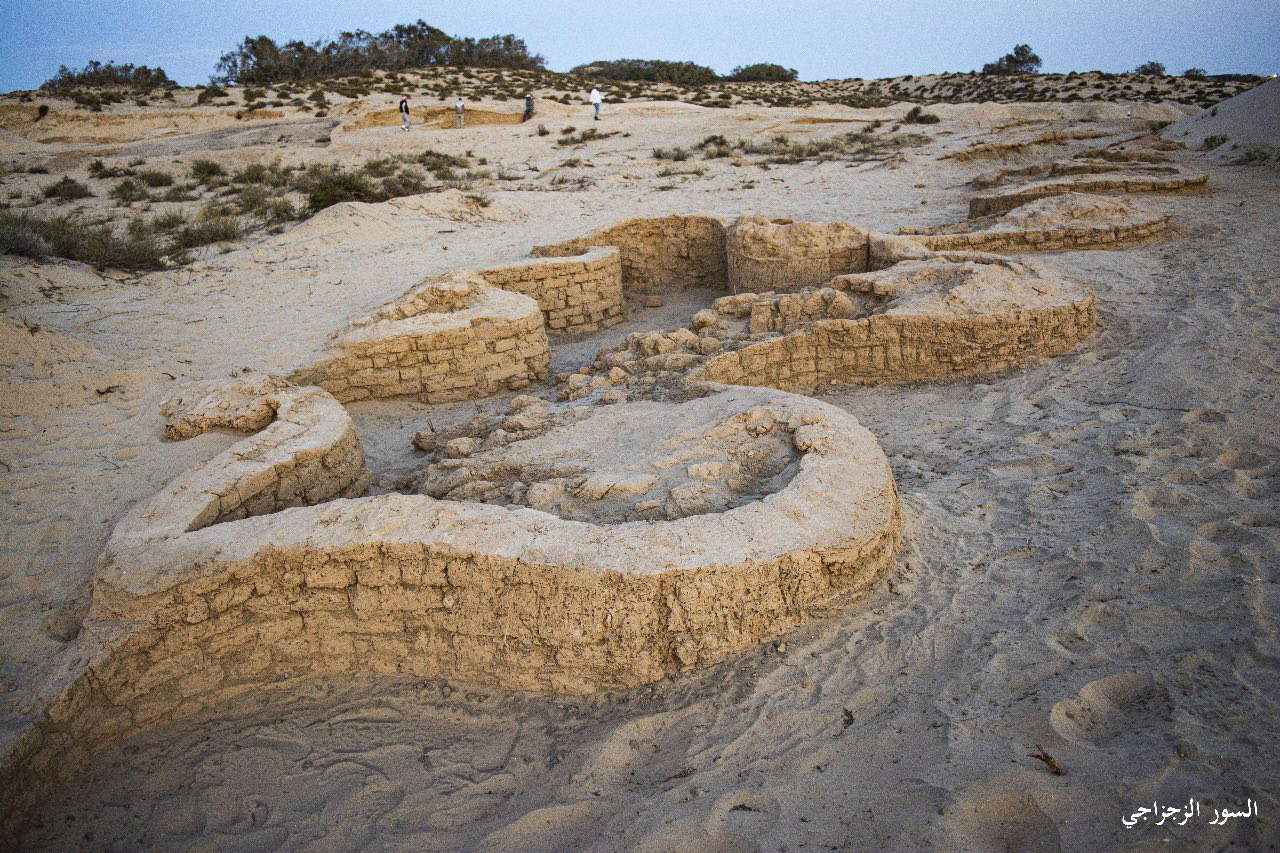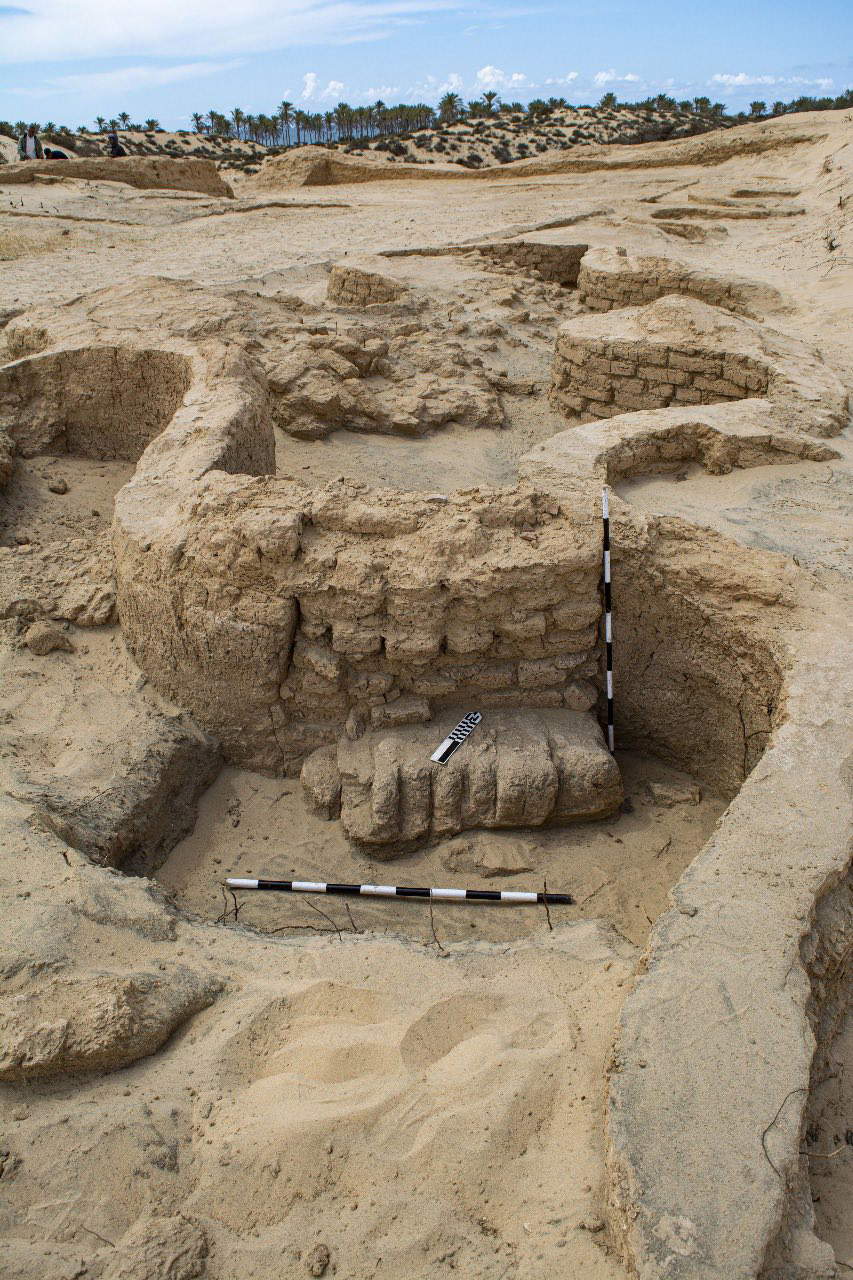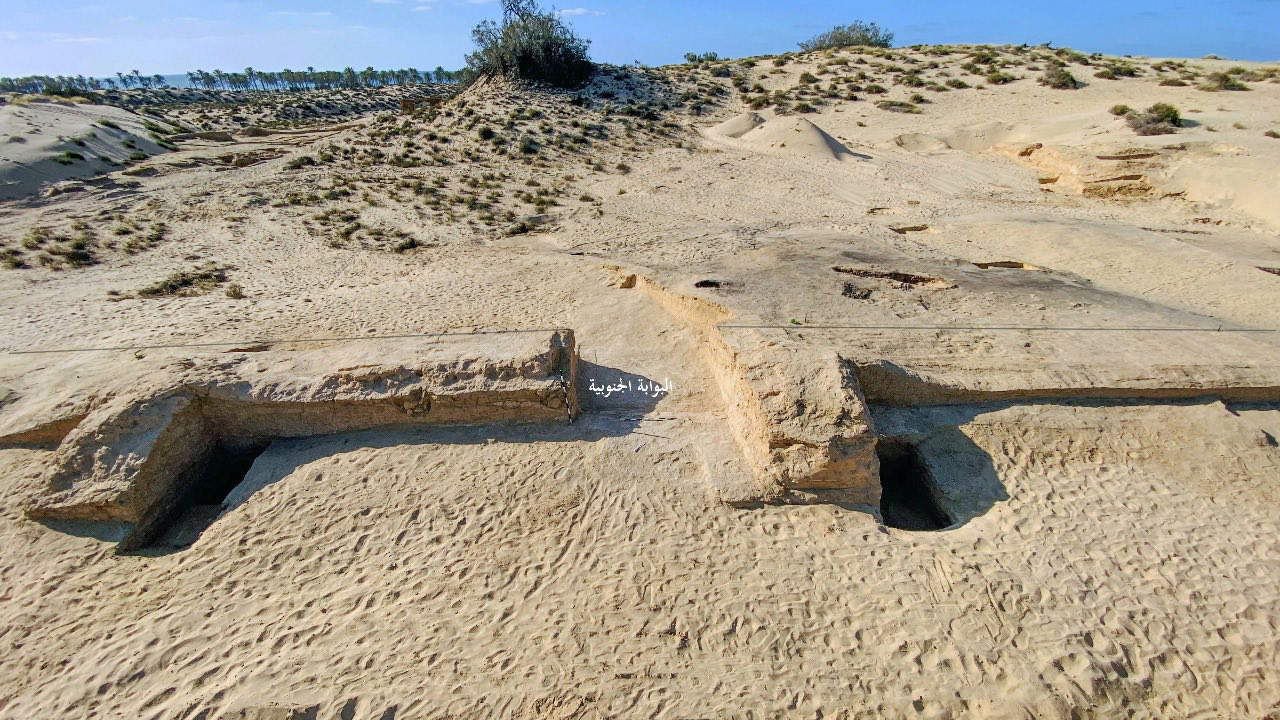A discovery of great historical and archaeological significance has emerged in North Sinai (Egypt), where an Egyptian mission has unearthed a large military fortress dating back to the New Kingdom era, along the famous “Horus War Route.” It is one of the most impressive defensive structures ever found in this region, located a short distance from the Mediterranean coast, and is new evidence of the extraordinary level of military planning achieved by Egyptian rulers in protecting the country’s eastern borders.
The discovery occurred at the archaeological site of Tel el-Kharouba, and it adds a key piece to the understanding of the system of fortifications built by the pharaohs to defend Egypt from incursions from the Levant and to ensure control of the strategic routes that connected the Nile Valley to Palestine. Archaeologists have identified the structure as one of the largest and most important of those that arose along the Horus Way, a network of military posts and forts that stretched from the eastern Nile delta to the borders with Asia.
Sharif Fathi, Egypt’s Minister of Tourism and Antiquities, stressed the symbolic and historical value of the find, calling it “a concrete embodiment of ancient Egypt’s military genius in building an integrated defense system to protect its land.” Fathi recalled how the discovery makes it possible to “tell new chapters of our military history and reaffirm Sinai’s role as a unique crossroads of civilizations throughout the centuries.”

Mohamed Ismail Khaled, secretary-general of the Supreme Council for Archaeology, also highlighted the importance of the discovery in reconstructing the entire Egyptian defense structure along the eastern border. “Each fortress we bring back to light,” he explained, “adds a new brick to our understanding of the military organization of Pharaonic Egypt. This find proves once again that Egyptian civilization was not only temples and tombs, but also a state with solid institutions capable of ensuring the security and stability of its borders.”
According to the Ministry’s release, the excavations identified part of the fortress’ southern wall, which is about 105 meters long and 2.5 meters thick, with a 2.20-meter wide entrance. The fortified structure includes at least 11 defense towers identified so far, to which are added the northwestern tower and parts of the northern and western walls. Archaeologists faced considerable difficulties due to shifting sand dunes that covered much of the area, making documentation and excavation work complex.
Mohamed Abdel-Badii, head of Egypt’s archaeological sector, disclosed that a wall structure about 75 meters long was also found on the western side of the fort. This wall, made of mud brick and described as a “glass wall” because of the compactness and shine of its surface, divides the area from north to south, isolating an inner section intended for the soldiers’ daily life. Such an architectural element, typical of New Kingdom fortifications, testifies to the high degree of adaptation of Egyptian military architecture to the extreme environmental conditions of Sinai.
Numerous artifacts were also found during the excavations that help to date and interpret the site. These include pottery sherds and vessels, foundation deposits placed under one of the towers and dating to the first half of the 18th Dynasty, as well as a vase bearing the cartouche of Thutmosi I, one of the best-known New Kingdom rulers. Rocks of volcanic origin, probably imported by sea from the Greek islands, were also found, an indication of the extensive trade and material contacts available to the Egyptian military administration. Alongside these elements, the mission also discovered a large bread oven and traces of petrified dough, a clear sign that the fort was also a center of daily life and logistics for the soldiers who resided there permanently.


Hisham Hussein, head of the Central Department for Coastal Archaeology, explained that preliminary analyses show that the fortress has experienced multiple phases of use, restoration and modification over the centuries. In particular, the southern entrance appears to have been redesigned several times, indicating a functional evolution probably related to the military needs of the period. Hussein announced that the mission will continue excavations to complete the mapping of the entire perimeter and internal structures, with the goal of also identifying the military port, which scholars say must have been located not far away along the Mediterranean coast and served as a landing point for warships and supply boats.
The new fort covers an area of about 8,000 square meters, three times that of the previous fort identified on the same site in the 1980s, located about 700 meters southwest of the current discovery. The size and architectural complexity of the structure indicate that it was a center of primary importance in the eastern Egyptian defense system, probably one of the main stops along the Horus road, the route that connected Egypt to the Canaanite cities and formed the advanced line of defense against incursions from Asia.
The Egyptian mission, composed of archaeologists, architects and restorers, now intends to extend its investigations to the surrounding areas to better understand the role of the fortress within the pharaonic military network and the relationships it had with other posts along the Horus route. Scholars speculate that the structure may have served not only as a defensive garrison but also as a point of commercial and cultural exchange between Egypt and the kingdoms of the Levant.
 |
| New ancient Egyptian military fortress discovered in Sinai |
Warning: the translation into English of the original Italian article was created using automatic tools. We undertake to review all articles, but we do not guarantee the total absence of inaccuracies in the translation due to the program. You can find the original by clicking on the ITA button. If you find any mistake,please contact us.